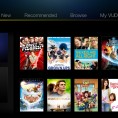Planning an effective social media strategy is essential for modern-day businesses, an idea we elaborate on further in our bestselling book, The Business Etiquette Bible. But what does it take to create the kind of campaign that truly connects? It’s a good question – and one we’ll aim to answer here.
After all, “the customer is always right” is an adage always worth remembering, but now, with the advent of social media, it’s also one worth keeping in mind more than ever, as customers can share their opinion faster and with more peers than ever before. How can you best handle the complex interplay of customer engagement, and customer service, that now takes place over social media? Katie Wagner, president of Katie Wagner Social Media, offers some helpful hints, tips, and strategies.
In an era of more informed consumers and increasingly hard to reach target markets, what’s the best way to capture customer and media attention in a compelling way?
Traditional marketing is changing. Social media has made storytelling more important than ever – building an emotional connection with your target audience. Every marketer has to be a journalist of sorts, finding the stories behind what their brand or business does every day, and telling them in a way that engages and builds credibility. Good stories contain people, and anecdotal evidence is more important than ever. Stats aren’t as compelling as they once were – consumers want to feel something for your brand.
The other change that factors in is that increasingly, people want to find their own information. They want to be able to Google a topic, read about it, and feel as if they are coming to their own conclusion. They want to make their own decisions – without being ‘sold’ to. This is one of the things that makes social media so powerful for consumers: It gives them a whole new layer of research. As business owners, then, our job is to put content out there for them to find. Not just on our websites, but in the form of blog posts, videos, white papers, webinars… content that educates and informs, but never sells. We want to help our customers to be the best possible consumers of our industries, without ever asking them directly to choose us.
This type of marketing engages in ways that traditional ‘promotions’ can’t. It builds us up as experts, keeps us front and center, but ultimately lets the consumer comes to the decision on their own terms.
Many organizations are still coming to grips with social media and the role it plays – what advice would you give them for making sure they use it in a way that’s helpful, respectful and useful to both the general public and their brand?
Social media is not a medium to jump into lightly. Just as with any other corporate communication strategy, it must be well thought through before deployment. This is not a place for ‘winging it’ or ad libbing. Even inside a brand that has a more relaxed and conversational style, the topics and composition of posts should be well-planned.
It’s important to implement a strategy that includes:
- What channels will you use, and why?
- How will you ensure that the voice is consistent across all communications?
- What is your brand’s voice?
- What will you do if a problem arises?
- What is your ultimate goal for social media?
- How will you measure that goal?
I always advise brands to start small. Rolling out a new social media initiative does not mean you have to have a presence on every channel. Start with one or two channels that you feel most comfortable with. Do them well. Measure your results. When you’re ready, you can expand.
This medium is also part of a long-term marketing plan. Social media is not ever ‘finished,’ and it takes time to build and generate activity. Don’t begin unless you plan to put the time and resources in over a period of six months to a year, before gauging its effectiveness.
Social media accounts – should we stick to one main one, or is it more appropriate to segment and have different accounts for different services, subsidiaries or categories of products?
This really depends on the brand. In most cases, I think it’s better to have one main corporate channel. However, some very large brands that have products in completely different sectors, all with strong followings, have done well by segmenting the pages. P&G comes to mind. The answer really lies in what kind of resources, human and financial, you have to maintain a social media presence. Creating channels and running them poorly will hurt you more than not having them to begin with. You must be able to sustain anything you create, so make the decision carefully and with a long-term plan in mind.
In the case of retailers, who have many locations, but sell the same products and services in each, I think one online location is best. A main corporate channel can have much better control of the brand’s image and with content from many different locations to draw from, a dynamic presence can be created.
For businesses that franchise, this decision becomes more difficult. It may be alright to allow franchisees to create their own presence on social media, but there needs to be some brand standards in place about how the language, logo and layout are used to support the brand. Otherwise, you run the risk of diluting the power of the brand itself.
This is a new medium, and many brands are jumping into it without thinking through what to do with different locations/products/services etc. Since most social media channels issue custom URLs and handles, you run the risk of one ‘brand’ page taking those names, and leaving another page for the same brand high and dry. Whatever a brand decides to do, a branding strategy should be established from the beginning, so plans can be made accordingly.
How can corporations engage with the public in productive fashion, handle situations when messaging takes unexpected directions, and maintain some degree of control over trusted properties without shooting themselves in the foot when situations develop in unanticipated ways?
The short answer to ‘How do you maintain control?’ is: You can’t. Social media is in many ways an open forum, and by entering the arena, you have to be willing to roll with the punches. The number one rule is that when someone mentions your company – whether it is directed to you or not – you must respond. Turning the other cheek is asking for more trouble, because consumers use a public medium to extract a reply. These days, customers see social media as the most direct line to customer service. If they put a situation out there, they are looking to have it resolved. So you have to respond, but it’s always best to take the high road.
Other customers are always watching, so handle the situation in a way that you would be proud to have them see. Be respectful. Be empathetic. And in every situation possible, work to fix the problem. As much as they can, a brand should try to take complaints offline as quickly as possible. If someone writes a tweet or a Yelp review, message them and ask for a number where they can be reached. Have the conversation away from social media if possible, and only return to the public forum once it has been resolved.
In some cases, a resolution may not be possible, and then it may be appropriate for a brand to issue a public statement about the situation. This should be done on the same channel where the complaint was made, and in a short, unemotional ‘just the facts’ manner.
Everyone is entitled to their opinion, and making those opinions public is easier than ever before. The most successful brands on social media are those that choose to take every opportunity to learn about their customers, and further that relationship. Even when the conversation is unexpected, it could be a valuable chance to hear from a segment of your audience that you wouldn’t have engaged with otherwise.
Customers are beginning to pick up on frivolous exchanges – there’s even a “Condescending Corporate Brand Page” satirical page that users can like on Facebook. How can we talk to social media users without coming off as condescending, and truly create value for them and conversations that matter?
The key to this is good listening skills and authenticity. The more open and authentic a brand is, the more well received they will be in the social realm. Every time you sit down at the keyboard, think of yourself as standing in front of a room full of people who say they’re interested in your product or service, but haven’t made up their mind to buy yet. Your job is not to convince them, but simply to answer questions, provide information, and continue the conversation.
When we try to “market” or “sell” on social media, we end up failing because consumers see through it. Instead, we must tell our story. We must be likable. And trustworthy. But above all, real. You don’t know whether your audience on social media has bought anything – or even will. But you do know they are interested enough to be there to listen, so treat them with respect. And by listening back, a brand can learn valuable lessons about who their potential customers are and what they care about.
It’s a cocktail party scenario – if you walked up to someone new and talked only about yourself and what you had to offer, your new acquaintance would quickly look for an excuse to walk away. But if you asked questions and were genuinely interested in the answers, they would be happy talking to you all night. It’s the same strategy on social media. The more interested you are in them, the more interesting they will suddenly find you.
What’s the ultimate goal: More likes, tweets, shares, stories? Or is there a better metric for gauging the effectiveness of campaigns?
Engagement is always better than sheer numbers. If you have 3,000 ‘fans’ who aren’t interacting with the content you’re putting out, and are basically just watching you scroll by in a newsfeed or Twitter stream, that won’t do much to help your business. On the other hand, if you had 300 fans who thought you were smart and credible, read everything you put out, interacted with the information you were sharing, and passed it along to their friends – that would impact your business in a big way. Engagement (comments, shares, retweets, conversation) keeps you and your business top of mind, so fans remember you when it’s time to buy or refer business.
At the end of the day, it strokes our egos to see big numbers, but it’s less important how many fans you have, and more important how they feel about you. Growing a community and building that ‘know, like and trust’ factor will eventually increase your bottom line. And isn’t that why we, as business owners, are getting involved in social media? You have to see results.
The trick to fostering productive conversation with customers online today is?
I think it’s important to remember that these days, consumers see past a well-written website. They realize that it’s information that we want them to know about our businesses – we wrote it. They’re demanding to know more about who we really are, because it’s so easy to find that information. On your social media channels, you did not write everything that’s said about your business, or you as a business owner. With Yelp reviews, LinkedIn recommendations, mentions on Twitter and Facebook wall posts so accessible to our potential customers, we have to be aware that they are getting a much more authentic look at our businesses than they have in the past.
And that must cause a return to good, old-fashioned customer service. You have to treat everyone you interact with as if they are your most important customer, because chances are, many of your most important customers are watching. Every user on social media has the power to sing your praises, or sully your reputation. Clients often ask me if they can delete it when someone makes a negative post about them. The fact is, in some cases you can, but I don’t believe you should.
No one believes that we, as business owners, make everyone happy 100% of the time. If all the feedback is glowing, it looks a little fishy. Also, by deleting or ignoring a comment from a customer, you run the risk of making them angrier and escalating the situation. It says a lot more about you as a business or a business owner to have people see you treat that customer with respect. Show concern about the problem, and work to resolve it. The old maxim ‘the customer is always right’ has never been more true – or more important.
The answer to maintaining good relationships on social media is authenticity. Be real, be honest, be forthcoming – and show genuine concern when someone has a bad experience. People will forgive you for a mistake, but they don’t forgive as easily if you sweep it under the rug, or look the other directions. Those things that used to take place behind closed doors are now very much out in the open.
For more, be sure to grab your copy of The Business Etiquette Bible today!














